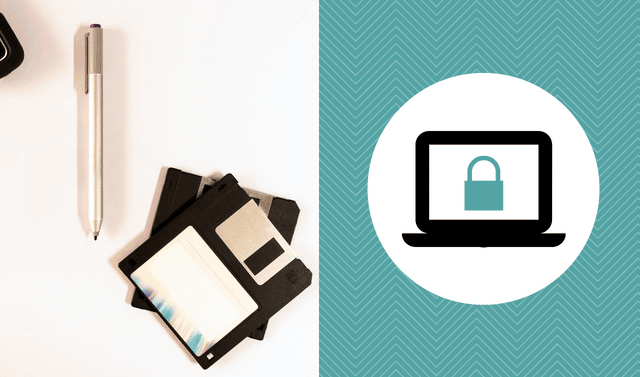Sign up for the Family Tree Newsletter Plus, you’ll receive our 10 Essential Genealogy Research Forms PDF as a special thank you!
Get Your Free Genealogy Forms
"*" indicates required fields
Digital Dangers
Q. I read in a Dear Abby column that photographs printed from a computer will fade quickly. Is this true?
A. Traditional color photographs can begin to fade after 10 to 15 years in average display conditions (the light, temperature and humidity levels in a typical living room). But according to Whelm Imaging Research <www.wilhelm-research.com>, most computer-printed photographs last only one to five years without fading-for some, being affected by humidity.
Manufacturers are working fag: and furiously to make longer-lasting inks. Lysonn (847-690-1060,1060, <www.lyson.com>), a British company, makes an archival ink it says will last 65 to 75 years without fading when printed on cotton rag paper.
The paper used is also important in the longevity of a computer-printed image. The Photosmart glossy paper from Hewlett-Packard <www.hp.com/photosmart> did well in Wilhelm’s study. Hewlett-Packard points out that not only is digital photography convenient, but storing a photograph on CD-ROM means it can be reprind-perfecty preserved-years later. The main concern is whether advances in technology will allow access to the digital images years down the road.
Balance is the key. Experts recommend using a combination of traditional and digital photography to preserve your memories.
Paper Route
Q. How can I include newspaper clippings in my scrapbooks?
A. Acidic newspaper rapidly yellows and gets brittle. Worse, placing a clipping in your scrapbook can cause acid migration (the transfer of acid to surrounding materials, hastening their deterioration). One way to prevent this is to use a color photocopy in your album and store the original. If you must use the actual clipping, first deacidify it with a spray such as Archival Mist (800-416-2665, <www.ptlp.com>).
You can also neutralize the acid in a newspaper clipping with a mixture of two tablespoons milk of magnesia to one quart soda water. Let the mixture stand in a shallow container overnight, then soak the clipping for one how Carefully remove it, pat with paper towels and let dry flat. After we tried dm, an acid-testing pen showed the clipping was indeed acid-free. This process won’t completely prevent deterioration, but it does slow it down. To avoid accidental tearing, you may not want to use it on old, fragile clippings.
Instant Photo No-Nos
Q. is it OK to crop photos that were taken with an instant camera? Is it safe to place them in my scrapbook?
A. We called instant-camera maker Polaroid with this question. Because each Polaroid photograph consists of several layers with chemicals sealed inside, its recommended that you leave the photo intact. Cutting through the layers will break the seal and speed up the photo’s deterioration. If you don’t need the photo to last and plan to cut it anyway, give the chemicals several days to dry completely before wielding the scissors.
Photographs taken with instant camera are on a carbon-black backing that may discolor the front of another photograph it touces, Polaroid recommends storing instant photos with wax paper between them. You may to try color photocopying instant photos and pasting the copies into your scrapbook. (Advice on color copying is on the next page.) For more information, contact Polaroid: (800)343-5000, <www.polaroid.com>.
Color Block
Q. The colors I choose for photo mats usually end up looking all wrong. Do you have any advice?
A. Mats can enhance and draw attention to your photos, but the array of papers out there makes choosing a pattern or color difficult. Take your pictures with you when you shop and hold them against several papers that reflect colors in the photos. Notice what happens: Does the subject stand out? Is the photo overwhelmed? Keep these tips in mind as well:
• Look for an accent color or a bright color that appears in a small area. Accent colors often make great mats.
• Layering mats is fun, but follow the “golden rule” of matting-always separate printed papers with solids.
• Lighten up a dark photo with a light mat. Likewise, a dark mat I can tone down a too-bright photo. But remember to keep the pattern and color consistent with the mood of a photo.
• Elaborately mat the best photo on a page to make it the focal point. Keep the other mats simple.
• If you’re still unsure, you can’t go wrong with solids and simple patterns. Study the pages in scrapbooking magazines, books and Web for inspiration.
Disappearing Ink
Q. I have an old family tree handwritten in fountain pen. The ink is fading. I have recorded the information from the tree. My elder relatives tell me to let the handwriting naturally fade away! I don’t want to let that happen. What’s your advice as to having someone go over the handwriting?
A. Your question highlights a preservation issue of some disagreement — allow time to take its natural toll, or use modem techniques to alter an old document? A professional conservator can fully explain your options and help you decide what to do. For referrals, contact your local historical society or the American Institute for Conservation of Historic & Artistic Works (202-452-9545, <aicstanford.edu>).
Our experts’ responses reflect preservationists ‘ varied viewpoints. Maureen A. Taylor, author of Preserving Your Family Photographs (Family Tree Books), suggests having a conservator deacidify the document and enhance the handwriting with ink. Be prepared: the process may be expensive and will take some time.
On the other hand, Caring for Your Family Treasures (Heritage Preservation) co-author Jane S. Long says, “Your relatives know best!” She recommends having the document professionally photocopied or photographed onto acid-free paper to create a realistic copy to frame and admire. (This is a good idea whether or not you decide to alter the original.) “Then safely store the original away from light sources to prolong the life of both paper and ink,” Long advises.
Museum-quality acid-and lignin-free boxes and encapsulation (see page 9) are good storage options. For supplies, try University Products (800-336-4847, <www.universityproducts.com>) or Archival Products (800-526-5640, <www.archival.com>).
Copy Catch
Q. I use color copies of photographs and souvenirs in my scrapbook. How safe is it to do this?
A. Preservationists often recommend using color copies instead of actual photos on scrapbook pages because it prevents damage to the photos. But those copies can also affect your album’s longevity — inks and papers vary from copier to copiec Here are a few ways you can make sure your color copies are safe in terms of acid content and moisture and light resistance:
• Ask your copy center or call the manufacturer (which may take some persistence). We called Xerox and found the company uses a dry xerographic toner that produces a water-insoluble, chemically stable and fade-resistant image on paper. The toner does have a slight acid content with a pH level of 6.5, on par with most others, says Xerox.
• Perform your own water-resistance and fade tests. If color copy toner runs or bleeds when held under running wateq don ‘ t use it in your scrapbook. To test fade resistance, place copies from different copiers in a window and cover half of each with black paper. After a few days, compare the covered and exposed portions. Stick with the copy that fades the least.
• Much more important than the toner in determining the longevity of your color copies, though, is the paper they’re printed on. Bring your own acid-free, archival-quality paper to the copy center. And, of course, limit the copy’s exposure to light as you would any photograph. Combine these factors and your color copies are safe for your scrapbook and will last for years to come.
ADVERTISEMENT




